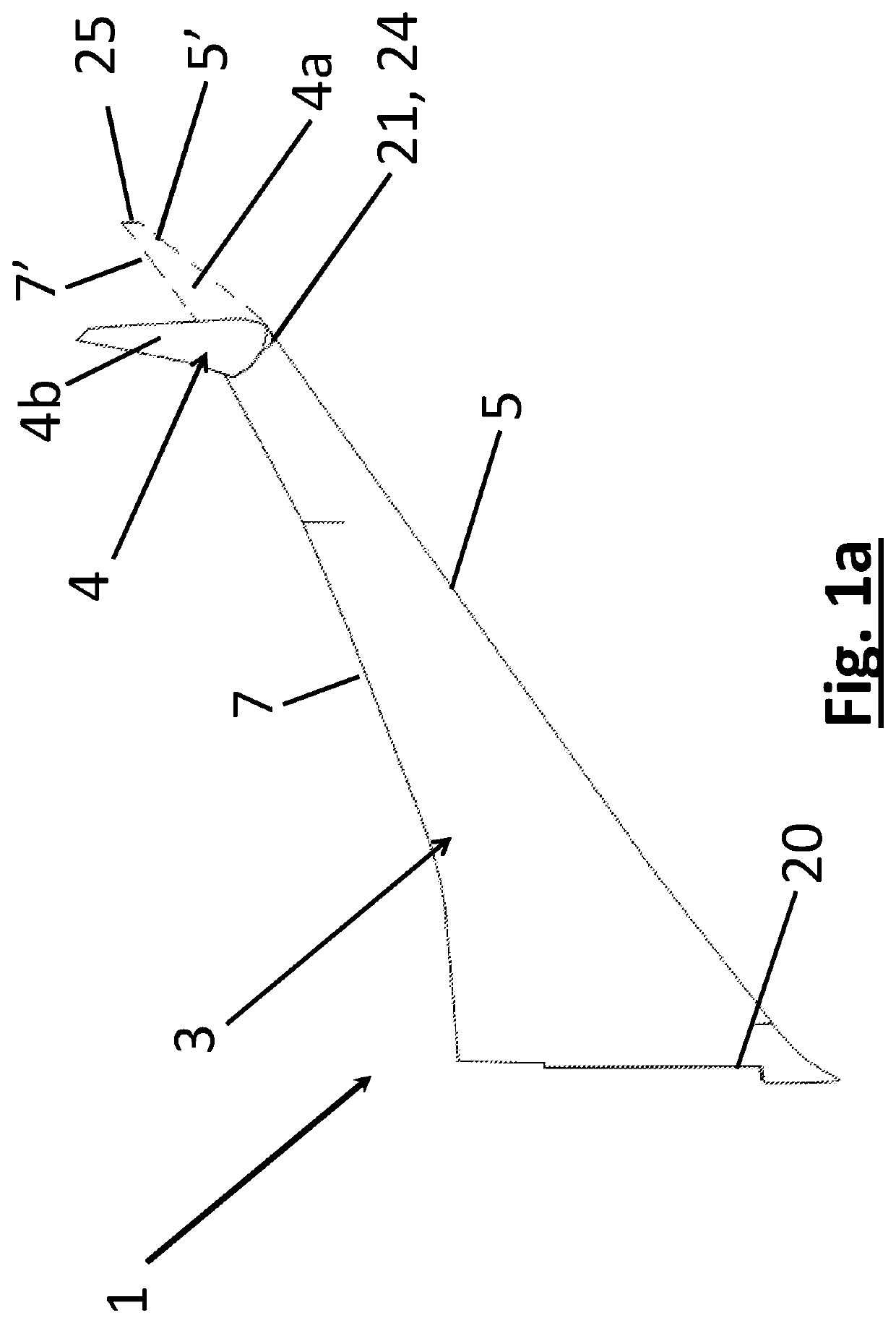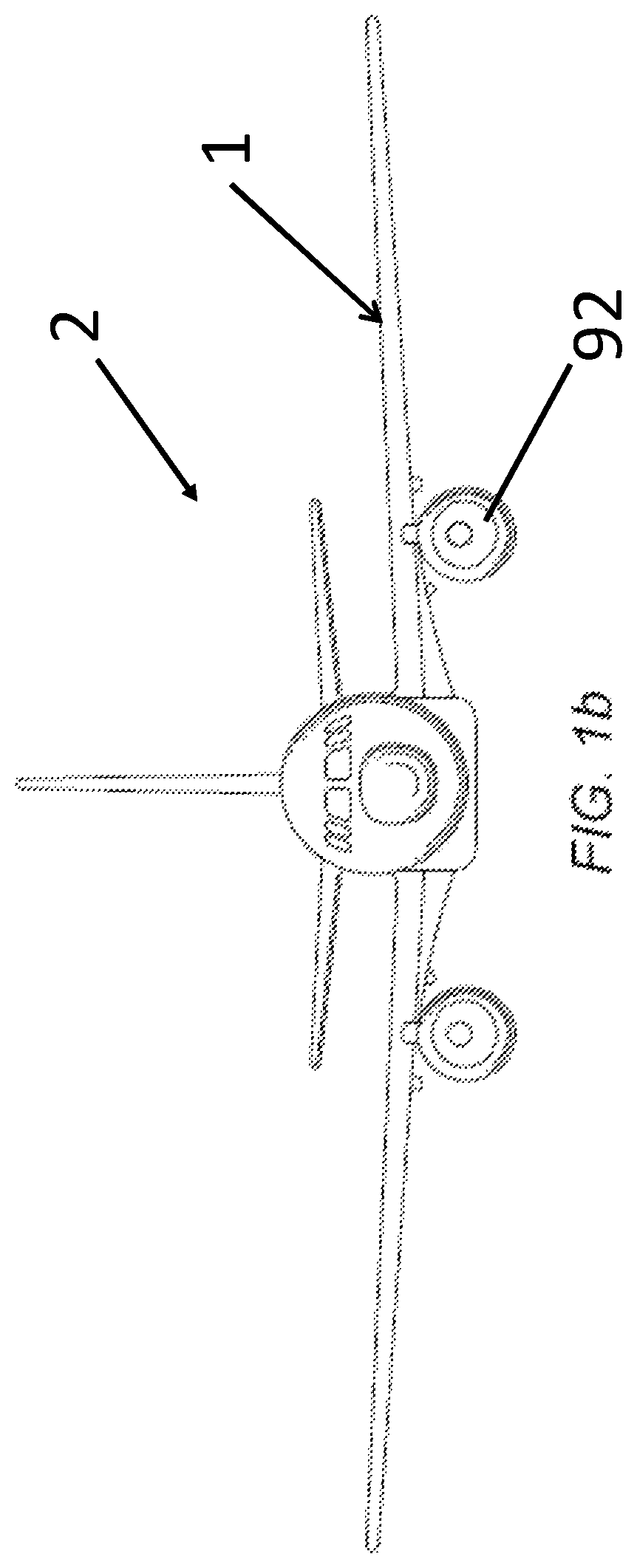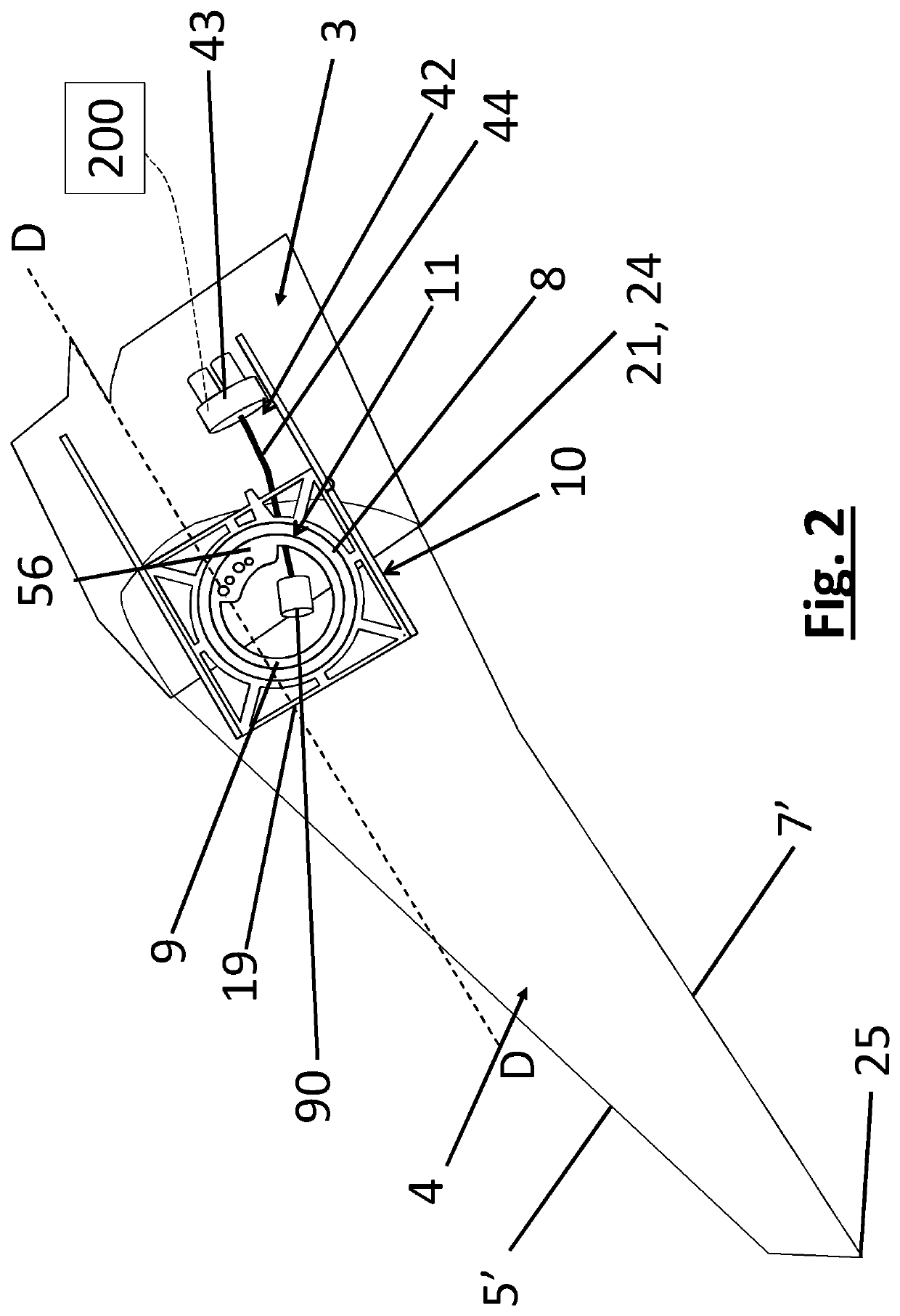Rotational joint for an aircraft folding wing
a technology for folding wings and rotational joints, which is applied in the direction of wing adjustments, aircraft components, fuselages, etc., can solve the problems of relatively complex design and construction of folding wings, limited maximum aircraft span, etc., and achieves the effect of reducing the concentration of loading on the locking pin, reducing the backlash of the rotational joint under loading, and avoiding large stresses
- Summary
- Abstract
- Description
- Claims
- Application Information
AI Technical Summary
Benefits of technology
Problems solved by technology
Method used
Image
Examples
first embodiment
[0166]FIG. 1a is a perspective view of an aircraft wing 1 of an aircraft 2 according to the invention. The aircraft wing 1 comprises a fixed wing 3 and a wing tip device 4.
[0167]The aircraft 2 is a passenger aircraft comprising a passenger cabin comprising a plurality of rows and columns of seat units for accommodating a multiplicity of passengers, in this case more than 50 passengers. The aircraft is a powered aircraft and comprises engines 92, mounted under the wings 1, for propelling the aircraft 2.
[0168]The fixed wing 3 extends outboard from the fuselage of the aircraft, in a span wise direction from a root 20 to a tip 21. The fixed wing 3 also extends in a chord-wise direction from a leading edge 5 to a trailing edge 7.
[0169]The wing tip device 4 is located at the outboard tip 21 of the fixed wing 3. In the described embodiment the wing tip device 4 is in the form of a planar wing tip extension, although the invention is also applicable to other types of wing tip device (e.g. a...
fourth embodiment
[0289]This embodiment differs from the fourth embodiment in that a jamming sensor, in the form of a magnetic sensor 203, is fixedly attached to the bore housing 50 and faces into the cylindrical bore 49 in which the alignment pin 61 is slidably mounted. A magnet 204 is fixedly attached to the alignment pin 61, so that it moves with the alignment pin 61 in the first direction D1.
[0290]The magnetic sensor 203, and magnet 204, form part of the control system 305. The magnetic sensor 203 is connected to the control unit 200, to provide an input signal to the control unit 200 (the control unit 200 is schematically shown twice in FIG. 14a for illustrative purposes, but it will be appreciated that there is only one control unit 200), and is arranged to sense the position of the magnet 204 in order to detect whether or not the alignment pin 61 has passed to its end position in the alignment bore 62. The control system 305, including the control unit 200, the solenoids 82, 87 and the operato...
PUM
 Login to View More
Login to View More Abstract
Description
Claims
Application Information
 Login to View More
Login to View More - R&D
- Intellectual Property
- Life Sciences
- Materials
- Tech Scout
- Unparalleled Data Quality
- Higher Quality Content
- 60% Fewer Hallucinations
Browse by: Latest US Patents, China's latest patents, Technical Efficacy Thesaurus, Application Domain, Technology Topic, Popular Technical Reports.
© 2025 PatSnap. All rights reserved.Legal|Privacy policy|Modern Slavery Act Transparency Statement|Sitemap|About US| Contact US: help@patsnap.com



